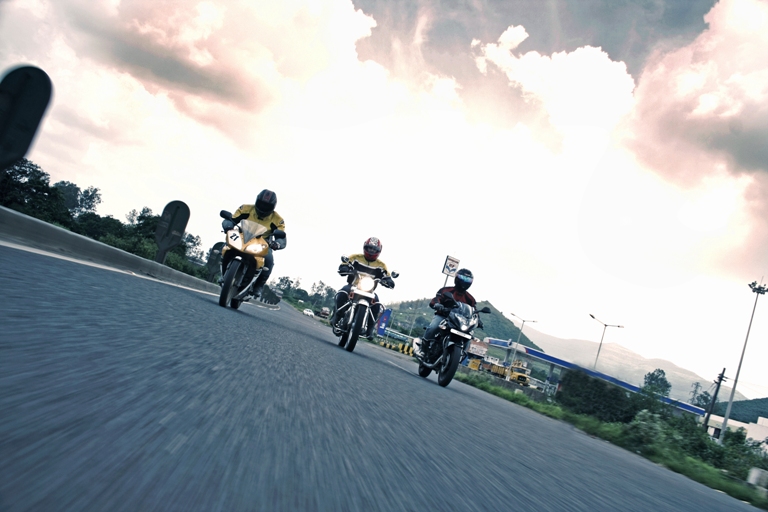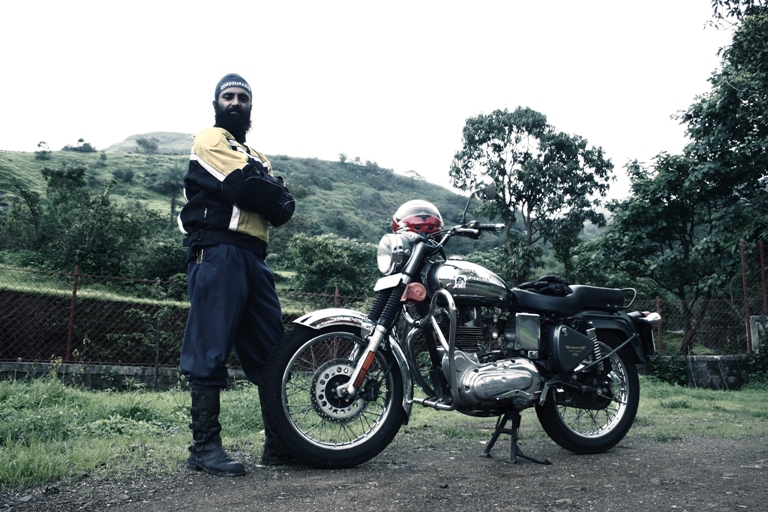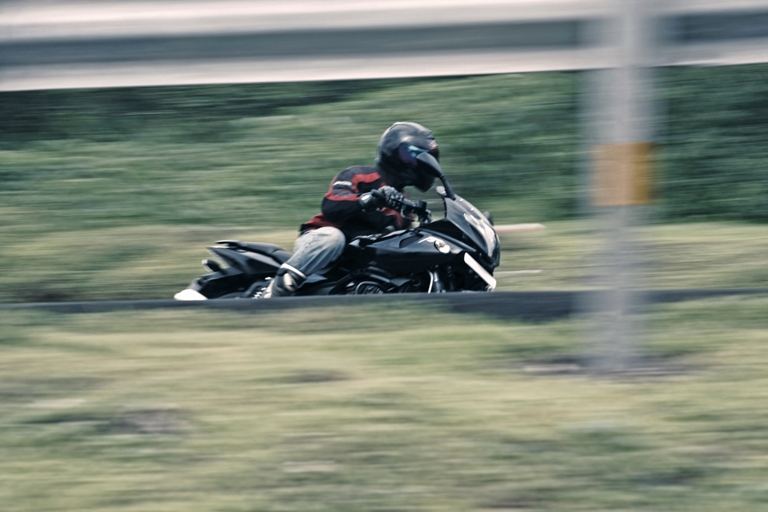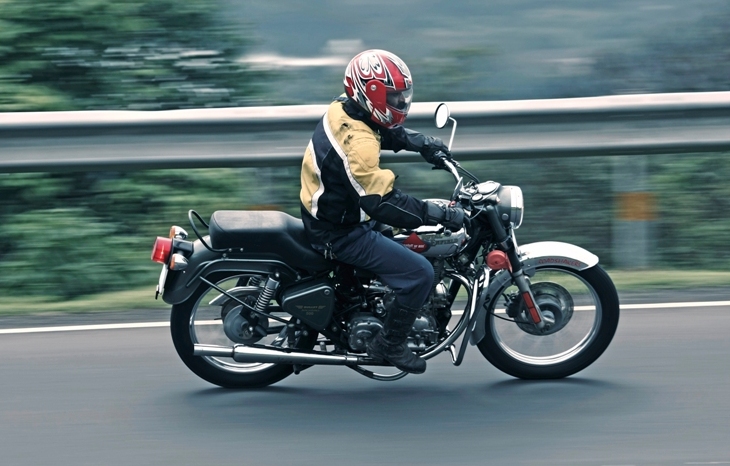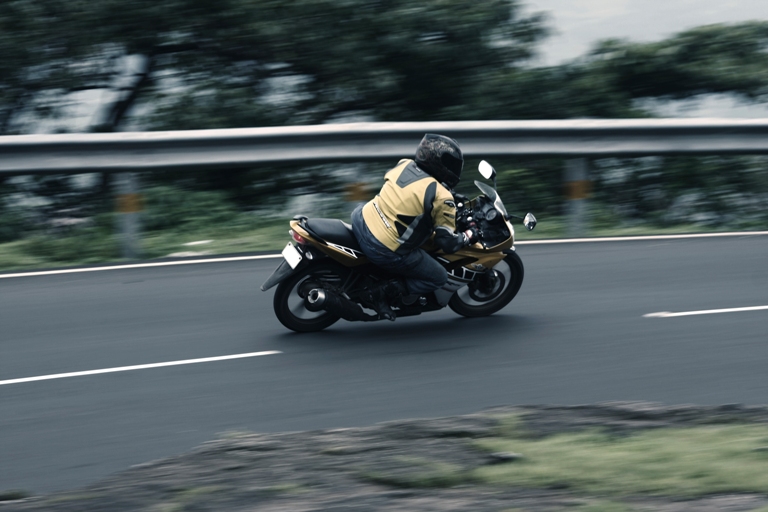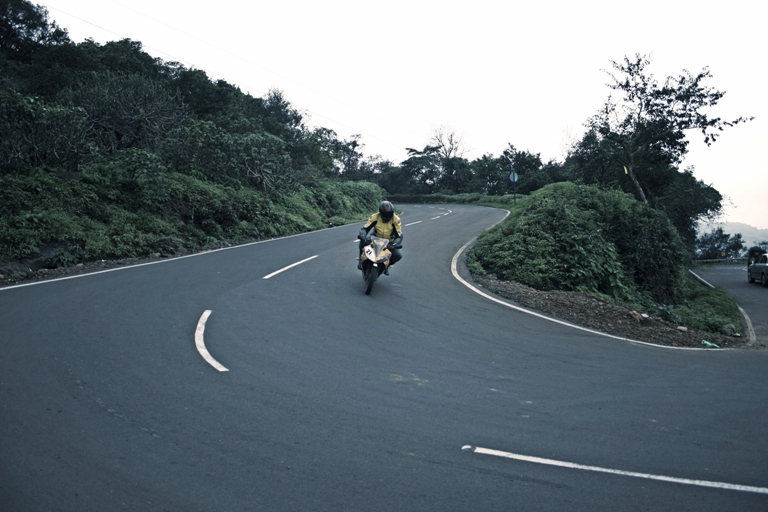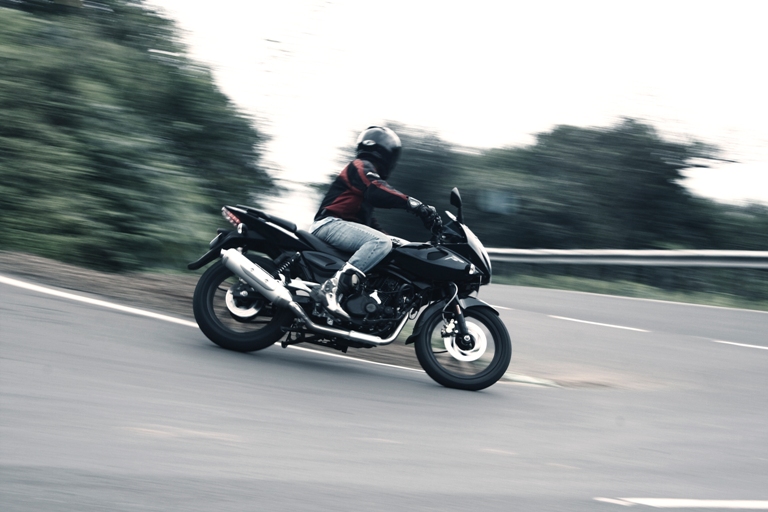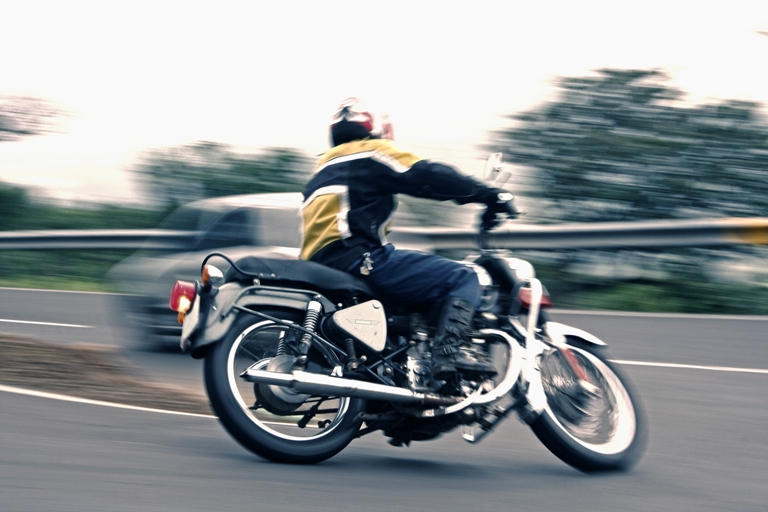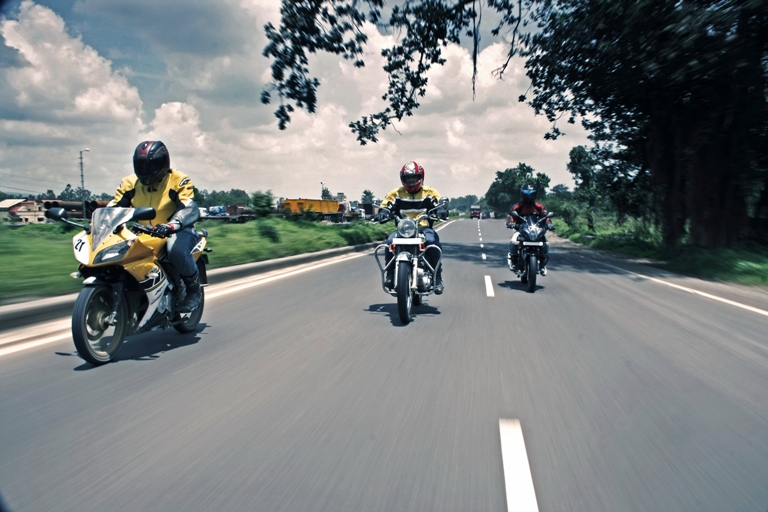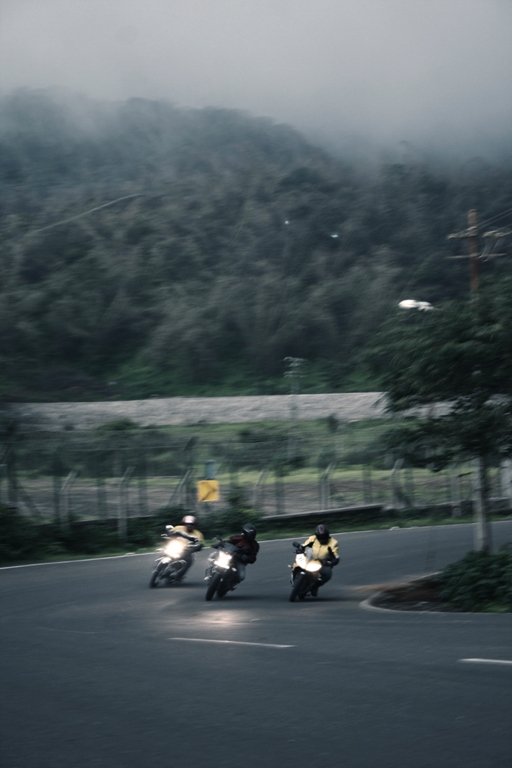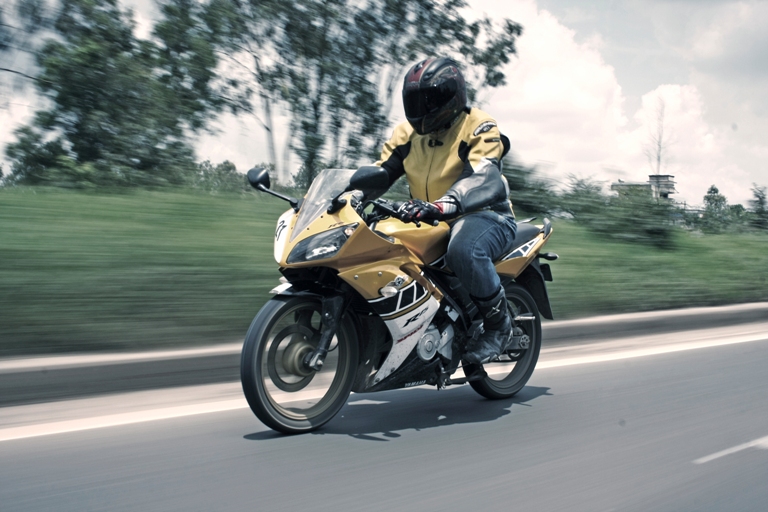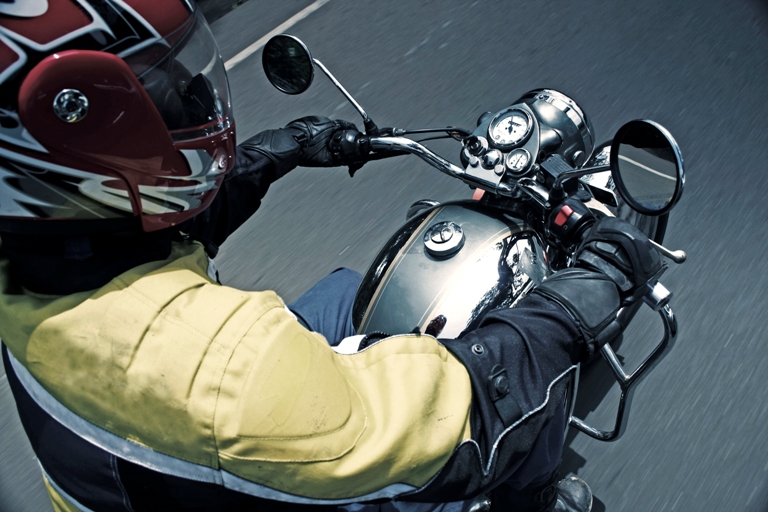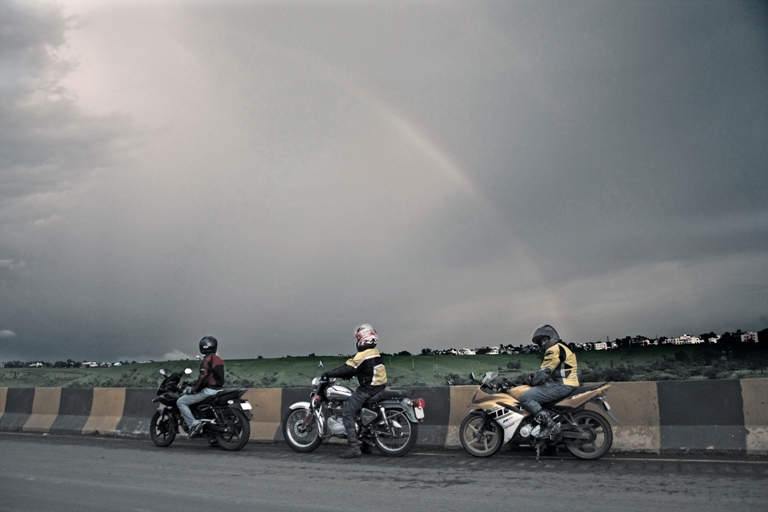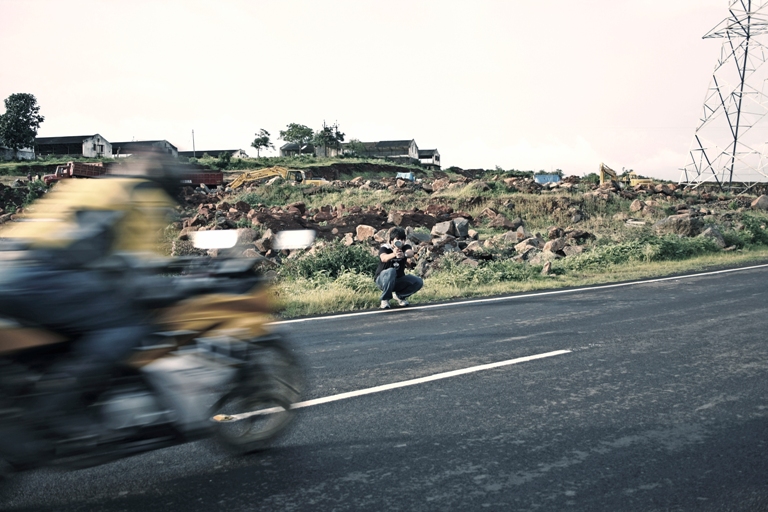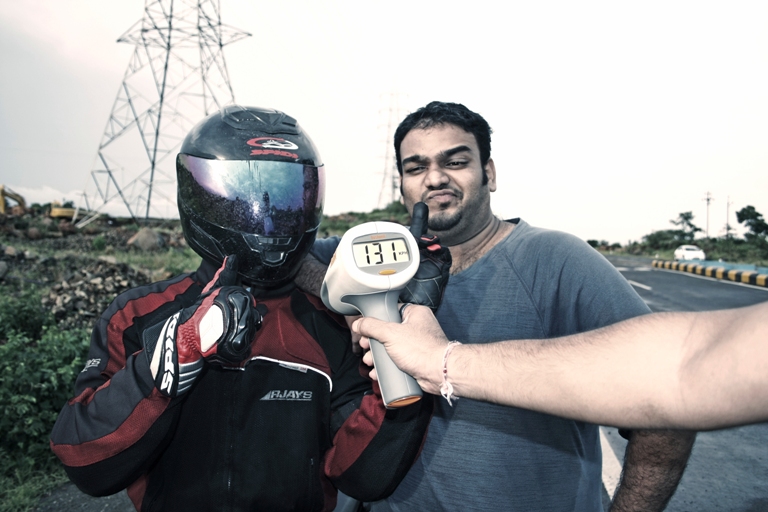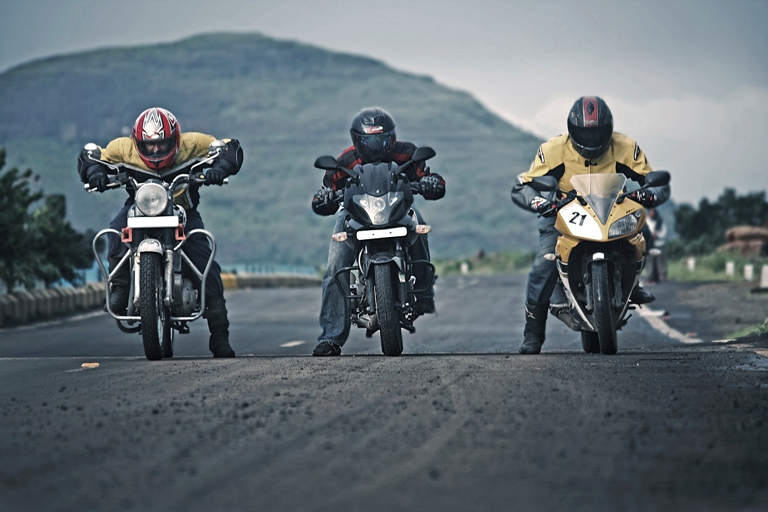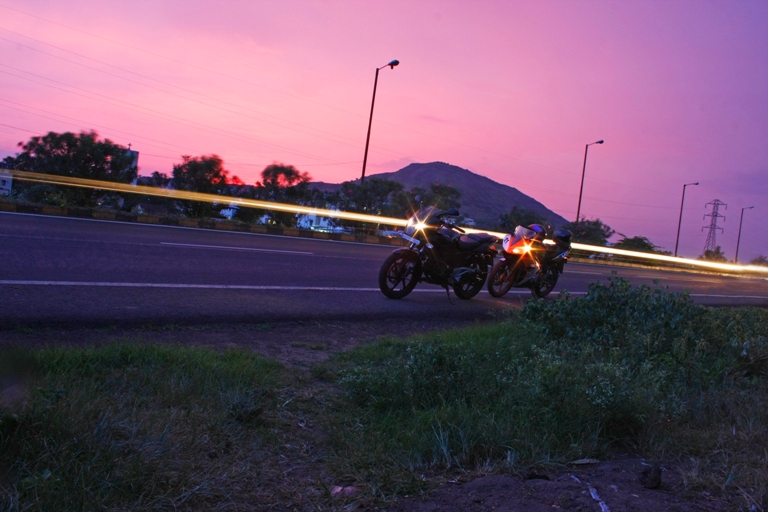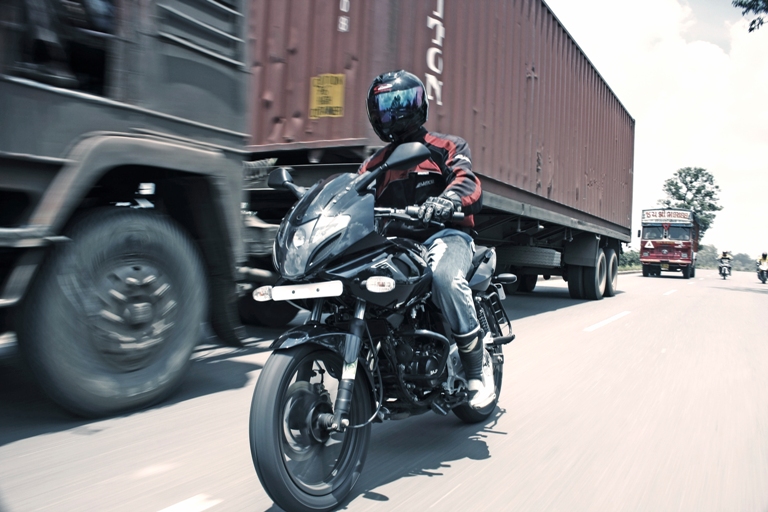So which one really is the fastest Indian?
No prizes for guessing what inspired us to do this shootout. Bajaj’s latest ad campaign declares the company’s newest product as the fastest Indian thing on two wheels around. Of course, we won’t believe it before we’ve seen it ourselves, and hence the following pages.
So how difficult can it really be? Strap the three bikes with that GPS driven device, whack all three of them open on a straight patch of tar, download files on the comp and lo! You have uncovered the Fastest Indian. Bullcrap! Fast, you see, is a tricky word. What’s fast is a straight line may absolutely suck around a snaky stretch of terra firma. Trust us; it isn’t as easy as it may appear. So we made the three contenders to perform in various conditions, and found out the winner based on which bike emerged the fastest overall. Gear up, let’s see how the events unfolded.
Up up and away!
There’s something called gravity which accounts for almost the entire amount of fuel we humans combust transporting things and ourselves. It’ll do whatever it takes to slow you down, especially if you’re attempting to scale some heights. The capability to ascend briskly up a curvy road with aplomb is probably the biggest evidence of the spunk a bike packs. Needless to say, we wanted the three bikes to go through the most rigorous test of their pace first, and the bike which has laid the most recent claim on the coveted ‘Fastest Indian’ crown had to be the first to get timed. The earlier Pulsar 220 FI that the current version has replaced was always a mighty impressive bike in terms of absolute power, torque and mid-range surge. And we were glad to realize that the current iteration is even better.
With close to 20 units of turning force and 21 horses packed tight in its 220cc engine the Pulsar felt utterly urgent and effortless while ascending the heights of our test course. Hillclimbs are very different from your usual straight line runs, as power reserved higher up the rev range isn’t as useable – it’s the low and mid range pep that really arms you to accelerate away from gravity after slowing down on those sharp hairpins. The Pulsar really shined with its well spaced gearing and forgiving nature as regards choosing the correct ratio. Even if you end up being a cog higher than ideal, the 220 with its strong torque spread doesn’t feel completely bogged down. It keeps going, giving you the opportunity to shift down without wasting much time. The Bajaj really impressed with its ability to keep the rev needle swinging northwards even in third gear while negotiating some steep gradients. And that, exactly, was the key to the impressive 3:53s time she set for the uphill course.
Next to follow was the Bullet 500LB. Looking at the three bikes, purely from the specifications point of view, this most powerful variant of the Machismo outclassed its two competitors by a humongous margin. The peak torque produced by this monster is a colossal 40Nm, almost double that of the closest competitor – the P220. Add to it the best power output of the trio, and the ‘Bullet’ really looks like a menacing contender on the paper. In reality, however, there are variables that hamper the swiftness and agility of this big bore bike. First, is the fact that this machine isn’t really designed to carve a masterpiece out of hilly roads, but to leave a fiery trail as it blazes through the straights – it’s sufficiently taut and sturdy, but not probably as easy to dip down and pick up again as its competitors. Secondly the Bullet is substantially heavier than its other two counterparts. Nonetheless, we were expecting the 500LB to be quick, especially while riding up, and quick it really was! We were surprised by the timing of the LB, which followed the 220 only by a margin of 7 seconds, clocking an
impressive time of 4:00, substantiating our decision to include it in the Fastest Indian comparo.
Third to go for the uphill run was the queen of the twisties, the undisputed ruler of the track thus far – the R15. Our study of the R15’s spec sheet suggested that it had a massive deficit of torque and riding it up the hill would require playing around with the ratios a lot more than the other two bikes so as to keep it in within the sweet spot. With 15Nm of turning force on tap, almost 6 units less than the Pulsar and 25 less than the big Machismo, climbing up the hill fast was always going to be, err, an uphill task for the R15, especially with its rev happy, peaky engine. Fighting against the gravity, the R15 wasn’t exactly at ease – select the wrong gear on one sharp turn, and you’d be made to work hard for the lost time, shifting down. The R15, even with is cubic capacity and torque deficit managed a respectable time of 3:59 – impressive for its size, but far from what it’s capable of doing around a flat circuit. The Pulsar with a substantial advantage of 6 seconds over its nearest competitor won our first round with aplomb!
Going Down the Hill
The torque rule was null and void in this section of the showdown. What mattered was brisk acceleration, taut handling, light weight, the grip and feedback from the tyres and above all, crisp, communicative braking. We were not expecting any surprises for this leg of the contest and reckoned that the agile and impeccably balanced R15 will take the cake here. The R15, thus, was the first to be clocked and it stood true to its reputation by logging a blistering time of 2:44 for the test route. The feather-light weight of the bike meant that there wasn’t any excessive momentum, and it was supremely easy to rein in all the speed and dip the bike in.
The 220 followed the Yammie, but this time the heavier weight of the bike and a relatively less sorted dynamic ability took its toll on the Pulsar’s timing. The Bajaj finished 2 seconds behind the R15, posting a time of 2:47
The heavyweight (literally) was the third to go for this round of timed runs. A softer front suspension, incomparably heavier weight and a relative reluctance to turn in meant that the LB wasn’t going to be the fastest here – its colossal torque advantage not coming much handy.
What we also realized was that a wider contact patch would have helped the bike to fare better during both its uphill and downhill runs. The Machismo came last here, with a time of 2:57, but it was no surprise, as blasting down a snaky road is not what this Enfield is meant to do. We were sure it would claw back some ground as soon as we hit the flats.
Hitting the highway
After some fancy timing and peg scrapping, it was time to get real – to test the capabilities of the three bikes on regulation highways. We took the three bikes on one of the national highways close to Pune to gauge their swiftness on the kind of roads most of us would tread while travelling long distances. We had gone into the touring mode. We weren’t exactly looking for the bike that could go from point A to point B in the least time, given the rider was on a suicide mission to keep the needle pinned, but to find out which bike went the fastest without pushing the engine to the limit. The idea was to ride fast without making the engine resent, to gobble some miles on the highway without a twisted valve or a jacked piston. What we also took into consideration was the stability of the three bikes against crosswinds, and The confidence with which they took undulations in their stride without getting unsettled. Long distance touring requires your bike to be not only fast, but steady and eased out. The mid range power also plays an important role, as it saves you the hassle of shifting down after braking every time before you get up to speed again.
The earlier P220 was always considered a potent touring tool. The seating position was just the right balance between a sporty and a comfy stance. There was enough grunt in the engine to keep going for the entire day at 115-118 km/h of true speed, and the mid range power and torque was just a dream. The FI was a bonus, freeing you from any worries of adjusting the carb for higher altitudes. The bad points were the rather hard seat and the half fairing that rubbed against the inner part of your leg to make it feel sore after long rides. The FI is not there anymore, so going up the Himalayas is going to be a problem, but this comparo is about deciding the fastest bike, and the treacherous Himalayas don’t allow you to go fast anyways. The good thing is, the newest variant of biggest Pulsar is now perceptibly quicker through the gears as long as you don’t go too high up in the sky. We loved the P220’s supremely planted stance, its addictive torque delivery above 3000 rpm and its poise over undulations at high speeds, thanks to its front biased weight distribution and wide footprint.
The Pulsar feels utterly relaxed munching miles at a brisk pace, even with a pillion rider and a reasonable amount of luggage on. The 220 can really cover a lot of ground, very fast.
The R15’s engine is a gem. It boasts bulletproof construction quality and a rev-happy nature that doesn’t resent being pinned to the redline all day long. This little Yammie too, just like the Pulsar is capable enough to maintain a speed of 115-120 for prolonged periods of time without the rider having to worry one bit about the engine.
The R15 is fast without a shade of doubt, but not probably in a tourer-friendly way. Every time you brake hard as the stupid trucker ahead of you swerves in without a signal, you really have to shift down more than a
couple of cogs. There is hardly any juice below 5000rpm, which really makes going fast without having to play with the shifter a little difficult. The problem is even more pronounced if you have a pillion and some luggage on. The thin MRF tyres are probably the grippiest of the triad here, but in a straight line nothing offers as much confidence as some wide rubber and the R15 does get a little unsettled over surfaces with loose granules or with potholes. No complaints about the comfort though. The brilliant suspension and the spot-on riding position will make you feel fresh even after hours of riding.
The Machismo, unsurprisingly is the real deal here. With 23 of the finest derby chargers all reared up under its fuel tank, and a gargantuan torque that exceeds 40Nm, nothing beats the 500LB when it comes to munching miles in a straight line with extraordinary disdain. The heavy weight of the bike which isn’t really appreciable around corners becomes a virtue here, endowing this Machismo with great stability and resistance against crosswinds. It doesn’t matter how much you load this bike with stuff, thanks to the torque, and 115-120 km/h is easy business without a worry, and with any amount of luggage on board. Yes, the Machismo employs far too many cubic centimeters to attain that colossal peak torque figure, but that doesn’t matter – it’s Indian, and all we want to know is whether it’s fastest. The 500LB takes the touring cake on the straights, and by a good margin.
Top Speed
The rules for this part of the shootout were simple – we’d give the contesting bikes a sprint distance of about 800 meters, after which we’ll have a speed trap to measure their exit speeds. The idea was to find out the realistic top speeds of the three bikes, and not the top speeds that require kilometers of straight, vacant roads and an endless wait. We wanted top speeds that are attainable on a regular basis, and so I stood at the end of the 800 meter marker with a Bushnell speed gun to measure the true speed of the three bikes.
Now this was going to be interesting as no one was absolutely sure of what the three bikes were capable of. We let the Pulsar220, the bikes that lays claim on being the fastest Indian go first. After several runs, the best the P220 managed was a true speed of 131km/h. Next to go was the little Yammie. The R15 is quick off the start, but it takes relatively a little more time hitting its top speed. The Japanese pocket rocket registered a top speed of 126km/h, 5 short of the Pulsar. We kept the most powerful bike for the last. The house was divided over which, of the P220 and the Machismo is going to be faster, and nobody was sure. The moment of truth arrived in a while though with the LB posting a top speed figure of 126 km/h. The Pulsar, without a doubt, emerged the fastest bike of the triad.
Sprint to Glory
Top speed is one thing, and to get there is another. Some bikes boast a high top speed, but with their lazy engines, or lack of torque almost take forever to reach there. Acceleration thus is a key parameter in deciding which, of a given set of bikes is actually the fastest if they have similar top speeds. We decided to gauge the acceleration of the three given bikes based on their 0-60km/h and 0-100km/h sprint timing. The results were pretty much in tune with what we had expected. The P220 managed a 0-60 km/h time of a little over 4 secs. The remaining two bikes were quite some distance behind with their times being a smidgen more than 5 secs.
For the 0-100km/h run, the P220 again emerged victorious with a timing of 12.5 seconds. The R15 stood at 14 seconds while the LB managed an almost similar time of 14.2seconds. Of the R15 and the Machismo, there is very little to choose in terms of outright acceleration – give or take a small fraction of a second here and there, but practically they are similar. The Pulsar is easily the quickest bike off the block here.
Dark Knights
A bike can be fast during the day, but riding in the dark is a completely different ball game. Visibility is the key to speed. A strong headlamp beam is crucial to riding fast in the night, as insufficient illumination hampers good vision. Not only does it impede speed, but also elevates the chances of a mishap by a great margin. The glare from the headlamps of the oncoming traffic tends to blind you and negates the illumination offered by your own bike’s headlamp. This is one reason why even average headlamps feel good in dark by lanes, while they become totally useless on state highways.
The P220 with its projector headlamp provides by far the best illumination of the triad. The strong beam of the Pulsar headlamp is really in a league of its own and offers great confidence to the rider. Given similar conditions, the Pulsar rider should feel far more confident treading his way home in the dark as compared to the other two bikes here.
And The Winner Is…
As we stated earlier, the sole objective of this shootout is to find out the fastest Indian bike on sale in this country. While a certain bike may be fast in a certain set of conditions, what we really wanted to uncover was the bike that was the swiftest overall. While the R15 is without a doubt the most agile bike, and would emerge victorious by a good margin on its home territory – the racetrack, it isn’t absolutely the fastest bike here. Moreover, the lack of low and mid-range grunt hampers its abilities in the real world to an extent. It’s a beautiful bike nonetheless and for someone who wants a bike solely to hone his riding skills, there isn’t a better option in the market. But as far as the Fastest Indian title goes, the Motoroids team decided that the R15 doesn’t quite make the cut.
We knew that the 500LB will be a serious contender in this shootout, and it really came close to stealing the thunder. It made a statement by emerging the winner in the section of the shootout which probably matters the most for the average biker – on the regulation highways, touring through cities. The rock solid stability and truckloads of torque right from the bottom of the rev range make it a formidably fast machine, especially for the Indian roads. But even with its virtues, as the timings and the top speed figures suggested, the LB wasn’t the fastest overall bike of the trio.
The P220 as we realized after this shootout is an absolute steal at the price at which it’s offered. It’ll give the R15 a real run for its money around the track, is faster than the Yammie while climbing uphill and in a straight line, and is definitely more practical for the real world with its yummy mid range. It has ample torque to lug a pair of humans with all their luggage, and as if all that wasn’t adequate, it has the brightest headlamp as well. The Pulsar220’s claim to fame is for real. This Bajaj is, indeed, the fastest Indian.

